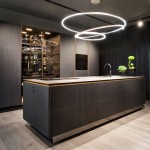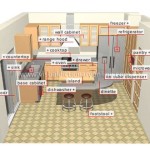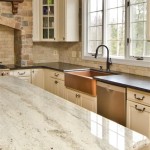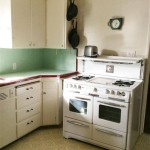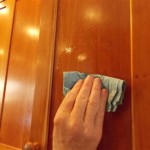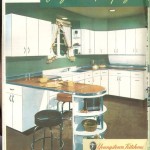White Vs. Dark Wood Kitchen Cabinets: A Comprehensive Comparison
The selection of kitchen cabinets constitutes a pivotal decision in any kitchen renovation or new construction project. Cabinets not only provide essential storage space but also significantly influence the overall aesthetic of the kitchen. Two enduring choices for kitchen cabinetry are white and dark wood, each possessing distinct characteristics that cater to varying design preferences and functional needs. This article will provide a comprehensive comparison of white and dark wood kitchen cabinets, exploring their respective advantages, disadvantages, and suitability for different kitchen styles and homeowners.
The enduring popularity of both white and dark wood cabinets stems from their versatility and visual impact. White cabinets offer a bright, clean, and timeless appeal, while dark wood cabinets evoke a sense of warmth, richness, and sophistication. The optimal choice between the two hinges on a multitude of factors, including the size of the kitchen, the desired ambiance, the existing décor, and the homeowner's personal taste.
Aesthetic Considerations
The aesthetic impact of kitchen cabinets is arguably the most significant factor in the decision-making process. White cabinets are renowned for their ability to brighten a space and create a sense of openness. This characteristic is particularly beneficial in smaller kitchens or those with limited natural light. Furthermore, white serves as a neutral backdrop, allowing other design elements, such as countertops, backsplashes, and appliances, to take center stage. White cabinets lend themselves well to a variety of kitchen styles, including modern, contemporary, traditional, farmhouse, and minimalist designs.
Dark wood cabinets, conversely, introduce a sense of depth and drama to a kitchen. They exude a feeling of warmth and luxury, creating a cozy and inviting atmosphere. Dark wood cabinets are often associated with traditional, rustic, and transitional kitchen styles. They can also be incorporated into more modern designs to create a striking contrast with lighter elements. The choice of wood species significantly impacts the final aesthetic; for example, cherry and mahogany offer a reddish-brown hue, while walnut and ebony provide a deeper, more dramatic tone.
The choice between white and dark wood cabinets also dictates the overall color palette of the kitchen. White cabinets offer greater flexibility in terms of color selection for walls, countertops, and accessories. They pair well with both light and dark colors, allowing for a wide range of design possibilities. Dark wood cabinets, on the other hand, require careful consideration of the surrounding colors. Lighter countertops and backsplashes are generally preferred to prevent the kitchen from feeling too dark or heavy.
Practicality and Maintenance
Beyond aesthetics, the practicality and maintenance of kitchen cabinets are crucial considerations. White cabinets, while visually appealing, are often perceived as being more prone to showing dirt, stains, and fingerprints. This is particularly true for painted white cabinets, which may require more frequent cleaning and touch-ups. However, advancements in paint technology have resulted in more durable and stain-resistant finishes, mitigating this concern to some extent.
Dark wood cabinets, in contrast, tend to conceal dirt and smudges more effectively. The natural grain and color variations of wood help to mask imperfections, reducing the need for constant cleaning. However, dark wood cabinets can show scratches and dents more readily than white cabinets. Furthermore, dust can be more visible on dark surfaces, requiring regular dusting to maintain a clean appearance.
The type of finish applied to both white and dark wood cabinets also plays a significant role in their durability and ease of maintenance. A high-quality, durable finish, such as a catalyzed varnish or polyurethane, will protect the cabinets from moisture, stains, and scratches. Matte finishes tend to be more forgiving in terms of hiding fingerprints and smudges, while glossy finishes offer a more reflective and easily cleaned surface.
Cost Considerations
The cost of kitchen cabinets varies widely depending on several factors, including the material, construction, style, and finish. Generally, the price of white and dark wood cabinets is comparable, assuming the same quality of materials and construction. However, certain wood species, such as exotic hardwoods, are more expensive than others. Similarly, custom cabinet designs and intricate details will typically increase the overall cost.
Painted white cabinets may require more labor-intensive preparation and finishing processes, potentially increasing their cost compared to stained wood cabinets. The number of coats of paint, the quality of the paint, and the application method all affect the final price. However, mass-produced, pre-fabricated white cabinets are often available at a lower cost than custom-made dark wood cabinets.
The long-term cost of ownership should also be considered. While white cabinets may require more frequent cleaning and touch-ups, they are less likely to go out of style compared to certain dark wood finishes. Trends in wood stains and finishes can change over time, potentially requiring homeowners to refinish or replace dark wood cabinets to maintain a contemporary look. White cabinets, on the other hand, are a timeless choice that can easily be updated with new hardware, countertops, and backsplashes.
Specific Design Styles and Applications
The suitability of white and dark wood cabinets varies depending on the desired kitchen style and the overall design concept. White cabinets are a natural fit for modern, contemporary, and minimalist kitchens. Their clean lines and bright aesthetic create a sense of spaciousness and sophistication. They can be paired with stainless steel appliances, sleek countertops, and minimalist hardware for a streamlined look.
Dark wood cabinets are often favored in traditional, rustic, and transitional kitchens. They complement natural stone countertops, intricate backsplashes, and traditional-style hardware. Dark wood cabinets can also be incorporated into farmhouse kitchens to add warmth and character. The choice of wood species and stain can further enhance the desired aesthetic; for example, cherry cabinets with a warm stain are well-suited for traditional kitchens, while reclaimed wood cabinets with a distressed finish are ideal for farmhouse kitchens.
In smaller kitchens, white cabinets are generally the preferred choice due to their ability to maximize light and create a sense of spaciousness. However, dark wood cabinets can be used strategically in smaller kitchens to create a focal point or to add a touch of drama. For example, a dark wood island can serve as a striking contrast to white perimeter cabinets. In larger kitchens, both white and dark wood cabinets can be used effectively, allowing for greater design flexibility.
Lighting Considerations
Lighting plays a critical role in highlighting the beauty of kitchen cabinets and creating the desired ambiance. White cabinets reflect light effectively, brightening the kitchen and reducing the need for artificial lighting. This is particularly beneficial in kitchens with limited natural light. Under-cabinet lighting can further enhance the brightness of white cabinets, illuminating the countertop and creating a warm glow.
Dark wood cabinets absorb light, requiring more careful consideration of lighting design. Adequate ambient lighting is essential to prevent the kitchen from feeling too dark or gloomy. Task lighting should be strategically placed to illuminate work areas, such as the countertops and sink. Accent lighting can be used to highlight specific features, such as decorative hardware or architectural details. Lighter countertops and backsplashes can also help to reflect light and brighten the space.
The type of light fixture also influences the overall aesthetic. Warm-toned lighting can enhance the warmth and richness of dark wood cabinets, while cooler-toned lighting can create a more modern and contemporary feel. Dimmable lighting allows for greater control over the ambiance, enabling homeowners to adjust the brightness and warmth of the light to suit their needs.
Hardware and Accessory Selection
The choice of hardware and accessories can significantly impact the overall look of kitchen cabinets. White cabinets offer greater flexibility in terms of hardware selection. Both light and dark hardware finishes can complement white cabinets, depending on the desired aesthetic. Stainless steel hardware creates a modern and contemporary look, while brass or bronze hardware adds warmth and traditional appeal.
Dark wood cabinets typically pair well with darker hardware finishes, such as oil-rubbed bronze, antique brass, or black. These finishes complement the richness of the wood and create a cohesive look. However, lighter hardware finishes, such as brushed nickel or stainless steel, can also be used to create a striking contrast and add a touch of modernity.
Accessories, such as cabinet organizers, pull-out shelves, and spice racks, can enhance the functionality and organization of kitchen cabinets. The choice of accessories should be based on the homeowner's specific needs and preferences. White cabinet interiors offer a clean and neutral backdrop for accessories, while dark cabinet interiors can add a touch of sophistication. The use of glass-front cabinets can also showcase decorative items and add visual interest to the kitchen.

7 Stylish New Kitchens In White Wood And Black

21 Diy Affordable Ways To Redo Kitchen Cabinets Extra Space Storage

5 Latest Fresh Looks For Natural Wood Kitchen Cabinets

House Home See How Warm Wood Wows In These 75 Kitchens Bathrooms

Light Vs Dark Kitchen Cabinets Wolf Home S

27 Dark Wood Kitchen Cabinets For A Strong Look Coco Lapine Designcoco Design

52 Black And White Kitchen Cabinets Timeless Look

9 Inspirational Kitchens That Combine Dark Wood Cabinetry And White Countertops

25 White And Wood Kitchen Ideas

How To Decide Between Light Or Dark Kitchen Cabinets
Related Posts

